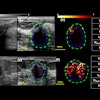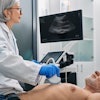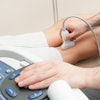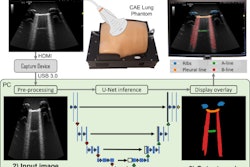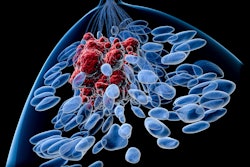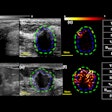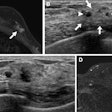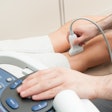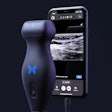Combined endobronchial ultrasound and endoscopic ultrasound (CUS) is a reliable tool for ruling out N2 disease in PET-negative lung cancer patients, researchers have reported.
Researchers led by Błażej Kużdżał, MD, from the Maria Skłodowska-Curie National Institute of Oncology in Cracow, Poland found that while N2 disease prevalence in PET-negative mediastinal lymph nodes is low, CUS achieved a high negative predictive value (NPV) in assessing the presence of N2 disease. (N2 disease is a type of non-small cell lung cancer [NSCLC]). And these results were independent of clinical factors.
"These findings provide novel insights into the diagnostic performance of CUS in different patient populations," Kużdżał and colleagues wrote in a study published February 11 in Clinical Radiology.
While PET imaging has high sensitivity in finding lymph node metastasis in lung cancer, the researchers noted its tendency to miss N2 node metastases. Undetected N2 disease, which indicates cancer in the lymph nodes, can affect disease staging and treatment strategies.
Previous studies suggest that CUS fine-needle aspiration biopsy has high sensitivity and NPV for detecting lymph node metastasis. However, the researchers pointed out that its effectiveness may vary depending on the size of metastatic deposits. These are often small in PET-negative nodes.
The Kużdżał team investigated the potential of CUS-guided fine-needle aspiration biopsy in finding N2 disease in patients with non-small cell lung cancer. All patients presented with PET-negative mediastinal lymph nodes. It also studied the impact of clinical characteristics on the likelihood of false-negative CUS results.
The study included retrospective single-center data from 596 patients, all of whom underwent PET-CT, followed by CUS imaging and lung resection with systematic lymph node dissection. The team used pathological examination of lymph nodes as the reference standard.
The researchers found a low prevalence of N2 disease, at 8%.
For detecting N2 disease, CUS achieved a low sensitivity of 14%, but achieved high specificity and NPV at 98% and 93%, respectively. The researchers also observed no significant associations between CUS measures and clinical factors. The latter included age, sex, body mass index (BMI), tumor grade, lobar location, and histological type (p > 0.05 for all).
In 43 patients with negative CUS results, 37 had minimal N2 disease. And six of the 596 total patients in the study had more than minimal disease (N2b) that CUS missed.
Finally, CUS achieved an NPV of 98% for minimal N2 involvement. The researchers said this suggests that CUS “can reliably exclude advanced N2 disease in most patients.”
The study authors called for prospective studies with a more diverse patient cohort and settings that reflect real-world practice to validate these findings.
“Future research should also explore the potential for integrating CUS with other diagnostic modalities to improve sensitivity without sacrificing specificity,” they added.
The study can be found in its entirety here.
